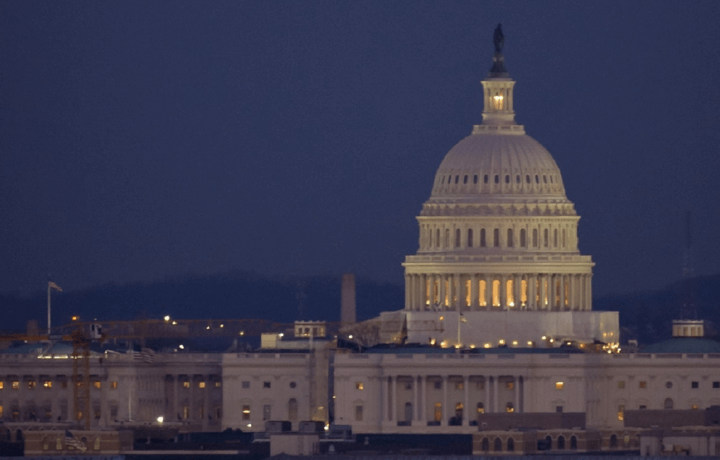Security clearance reform is nothing new – congressional hearings on the security clearance process weren’t a bi-product of the backlog created in the wake of the Office of Personnel Management (OPM) breach and USIS departure – as long as there has been a personnel security program, there has been congressional oversight and calls for reforms and improvements. In fact, many of the initiatives we see being debated and encouraged today (think reciprocity), have been a part of the reform process for decades.
Because actual security policy is an executive function, what Congress brings to bear is oversight – and that’s what we see in the 2020 National Defense Authorization Act, expected to be passed by the Senate and signed by the President as early as this week.
“…despite sustained efforts by Congress and the executive branch, an unacceptable backlog in processing and adjudicating security clearances persists, both within elements of the intelligence community and in other departments of the Federal Government, with some processing times exceeding a year or even more; the protracted clearance timetable threatens the ability of elements of the intelligence community to hire and retain highly qualified individuals, and thus to fulfill the missions of such elements; the prospect of a lengthy clearance process deters some such individuals from seeking employment with the intelligence community in the first place, and, when faced with a long wait time, those with conditional offers of employment may opt to discontinue the security clearance process and pursue different opportunities; now more than ever, therefore, the broken security clearance process badly needs fundamental reform,” the NDAA states.
The NDAA notes the priority of modernizing the personnel security system, demands accountability from those with the investigative functions, and moves forward initiatives such as replacing periodic reinvestigations with continuous evaluation and getting the security clearance backlog to a steady state. You could put the security clearance reform section of the NDAA into three buckets:
- Progress
- Plans & Process
- Policy
Security Clearance Progress
The 2020 NDAA requires a plan with milestone for reducing the background investigation inventory to 200,000 cases. Cue fist pumping across the Defense Counterintelligence and Security Agency (DCSA) staff, as DCSA Director Charles Phalen has already announced he expects the steady-state of pending security clearance investigations to be reached by January.
The NDAA also calls for an update on the risk framework (think Trusted Workforce 2.0), including how technology will be used to detect and prevent insider threats (think continuous evaluation), as well as efforts in reciprocity and portability.
Security Clearance Plans
The NDAA calls on the Office of the Director of National Intelligence to report on whether the current questionnaire for national security positions (SF-86), effectively supports the current adjudicative guidelines, and if the questionnaire should be updated in light of the insider threat. It also requests examination into simplifying the form and providing better customer support for applicants.
It also calls for replacing periodic reinvestigations with continuous vetting, “in all appropriate circumstances.” The Department of Defense has already said it plans to dramatically increase CE enrollment over this year, more than doubling the current population of individuals.
Standardization came up several times, with clear implications on reciprocity – an ongoing issue that does not necessarily look to improve with CE implementation. The NDAA asks ODNI to look into standards in initiation, polygraph and the application of adjudicative guidelines across agencies.
The NDAA requests the collection of timelines for contractor movement between agencies, including security incidents and job performance as consistent with the Privacy Act. It also pushes for changing the FAR to ensure contractor clearance information is appropriately shared between and among agencies and contractors
The NDAA sets new security clearance processing milestones to be met by December of 2021, for the fastest 90% of all security clearances:
- 30 days or fewer for a Secret clearance
- 90 days or fewer for a Top Secret clearance
- Reciprocity at the same level be recognized within two weeks
It also advises that 90% of all clearances be rolled into CE, with only 10% requiring periodic reinvestigations.
Security Clearance Policy
Congress continues to push forward the ‘clearance in person’ concept – a push for security clearance portability that will increase the ability of individuals to move in and out of government positions. ODNI is required to submit a report on the concept no later than 90 days after the enactment of the NDAA, including recommending the feasibility and advisability. The report would increase the period of eligibility to three years, and allow individuals to opt to enroll into a continuous vetting program that could extend their eligibility even further. The government is still considering the counterintelligence risks, and the costs.
In perhaps the biggest process change, the NDAA requires ODNI to issue a policy to federal agencies to create an online portal no later than December 31, 2023 which would allow both human resources professionals and very significantly – applicants – to access information about the status of security clearance applications and average timetables for each stage of the security clearance process. The information gap is today one of the most critical elements facing security clearance applicants. Without querying an individual who has access to the government’s security clearance systems of record, applicants are often left reading tea leaves (or consulting online discussion boards) to ascertain where they may be in the process. That information gap makes it all to easy for applicants to accept other positions, rather than waiting for a successful security clearance determination.
It’s important to remember that while Congress can put out the ‘ask’ – it still falls on the individual agencies or most often ODNI to take the action. But the NDAA is a good time to see where security clearance reforms are headed. The message is clear – the backlog is down, CE is here to stay and PRs are going away, and it’s time to put more information into the hands of applicants.




